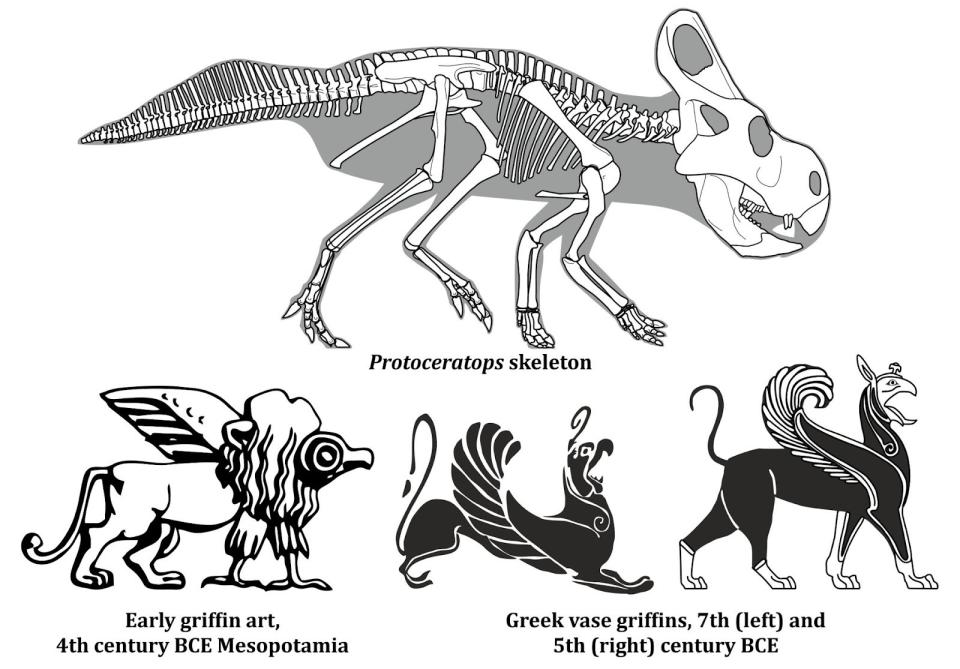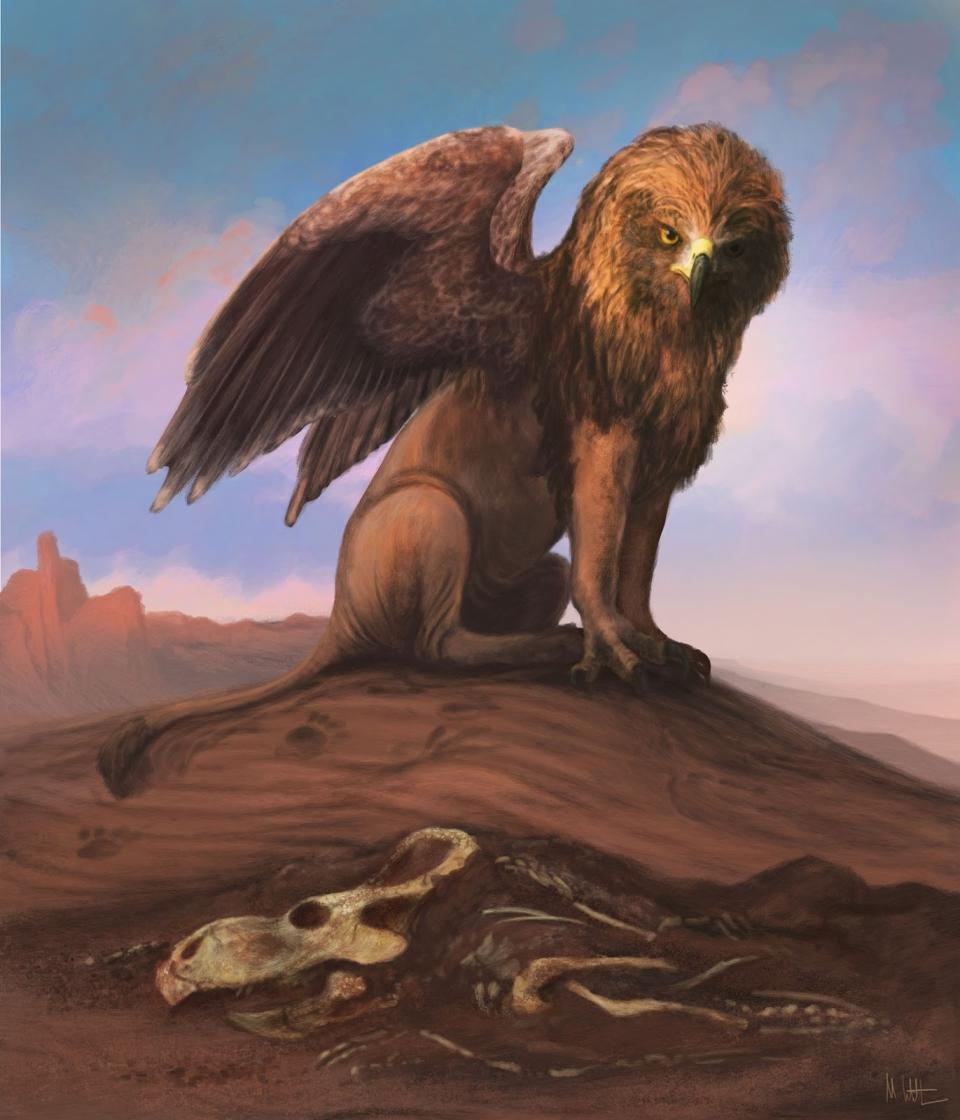Scientists dismiss theory that griffins were inspired by dinosaur fossils
Scientists say they have debunked the theory that dinosaur fossils inspired the myth of the griffin.
According to legends dating back as far as the 4th millennium BC, the griffin, or gryphon, was a fabulous creature with a raptorial bird head and wings on a lion’s body.
And for more than 30 years it has been widely accepted that griffin mythology was started by early fossil hunters in Mongolia and northern China who may have stumbled across fossils of the Protoceratops dinosaur while digging for gold.
This relative of the Triceratops lived during the Cretaceous period of about 75-71 million years ago and, like griffins, they stood on four legs, had beaks and had frill-like extensions on their skulls which could have been interpreted as wings.

The theory of this connection was proposed by classical folklorist Adrienne Mayor in her 1989 cryptozoology paper entitled “Paleocryptozoology”.
Dr Mark Witton and Richard Hing, palaeontologists at the University of Portsmouth, have now re-evaluated historical fossil records in relation to Ms Mayor’s arguments and say they have concluded they do not “withstand scrutiny”.
They say the suggestion that Protoceratops fossils were found by nomads prospecting for gold does not stand up because no gold has been found near known fossil sites, and add that, even if they had been found, it is unlikely they would have been recognised as the remains of a creature.
Dr Witton said: “There is an assumption that dinosaur skeletons are discovered half-exposed, lying around almost like the remains of recently-deceased animals.
“But, generally speaking, just a fraction of an eroding dinosaur skeleton will be visible to the naked eye, unnoticed to all except for sharp-eyed fossil hunters.
“That’s almost certainly how ancient peoples wandering around Mongolia encountered Protoceratops.
“If they wanted to see more, as they’d need to if they were forming myths about these animals, they’d have to extract the fossil from the surrounding rock.
“That is no small task, even with modern tools, glues, protective wrapping and preparatory techniques.
“It seems more probable that Protoceratops remains, by and large, went unnoticed – if the gold prospectors were even there to see them.”
In their study, published in Interdisciplinary Science Reviews, they also state that the geographic spread of griffin art through history does not align with the scenario of griffin lore beginning with Central Asian fossils and then spreading west.
Dr Witton said: “Everything about griffin origins is consistent with their traditional interpretation as imaginary beasts, just as their appearance is entirely explained by them being chimeras of big cats and raptorial birds.
“Invoking a role for dinosaurs in griffin lore, especially species from distant lands like Protoceratops, not only introduces unnecessary complexity and inconsistencies to their origins, but also relies on interpretations and proposals that don’t withstand scrutiny.”
The authors added that there is excellent evidence of fossils being culturally important throughout human history, with innumerable instances of fossils inspiring folklore around the world, referred to as “geomyths”.

Mr Hing said: “It is important to distinguish between fossil folklore with a factual basis – that is, connections between fossils and myth evidenced by archaeological discoveries or compelling references in literature and artwork – and speculated connections based on intuition.
“There is nothing inherently wrong with the idea that ancient peoples found dinosaur bones and incorporated them into their mythology, but we need to root such proposals in realities of history, geography and palaeontology. Otherwise, they are just speculation.”

 Yahoo News
Yahoo News 
